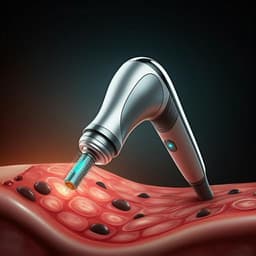
Chemistry
Sample illumination device facilitates in situ light-coupled NMR spectroscopy without fibre optics
J. E. Bramham and A. P. Golovanov
Discover how NMRtorch, a groundbreaking device designed by Jack E. Bramham and Alexander P. Golovanov, illuminates liquid-state NMR samples more effectively than ever. This innovative tool enhances photo-NMR applications, offering insights into photoisomerisation and UV degradation studies.
Playback language: English
Related Publications
Explore these studies to deepen your understanding of the subject.







